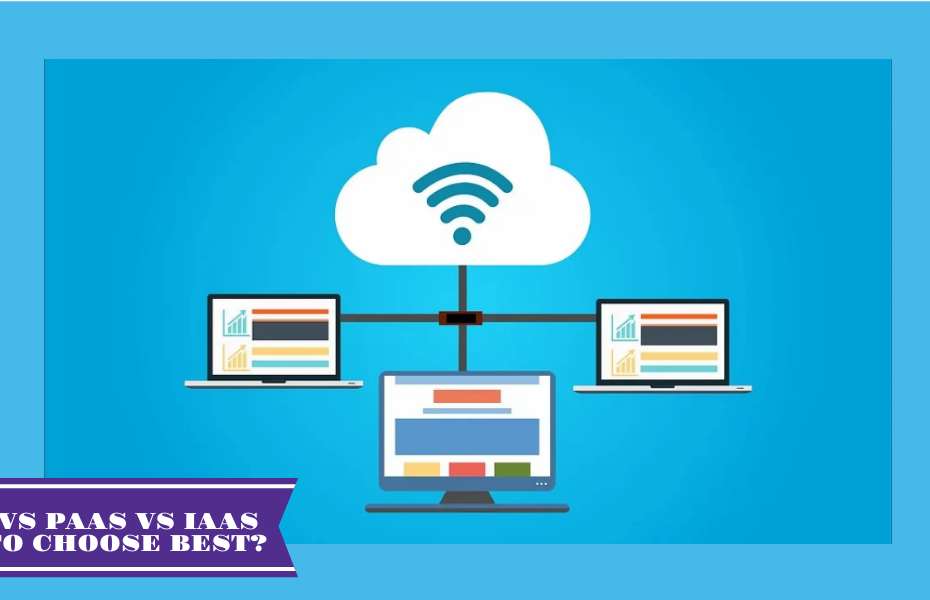We can differentiate between three large groups of as a Service which include Saas vs Paas vs IaaS:
- Infrastructure (IaaS)
- Platform (PaaS)
- Software (SaaS)

In recent years, Cloud Computing has made a 180º turn in the management of resources in the field of computing, both for users and for companies. Understanding any XaaS models and element as a service offer great flexibility. In addition, they open up a wide range of new possibilities in terms of doing business.
When developing applications in the cloud, it is important to know exactly how it is going to be done. Below we explain in detail the different Cloud Computing Services that exist and the characteristics of each of them.
Table of Contents
What is IaaS? Infrastructure as a Service
IaaS (Infrastructure-as-a-Service) is the ideal system for developers who want to take charge of the management and administration of their infrastructure. It offers greater control than other alternatives such as PaaS so that the developer is responsible for everything related to infrastructure maintenance, including scaling their applications based on what their needs are.
The best example of IaaS is Amazon Web Service. It is a platform that offers a series of services so that developers can manage virtual machines in the cloud, which also act as storage space. It is the developers who choose the OS, Windows, or Linux, as well as the memory capacity of each machine. The hardware is 100% transparent so that each developer can manage it in the way they see fit.
What is PaaS? Platform as a Service
PaaS (Platform-as-a-Service) is presented as the ideal alternative for those application developers who only want to worry about building the app. The infrastructure is provided by the platform and takes care of both its management and its maintenance.
Unlike IaaS, building applications and managing the platform are very simple. And it is that PaaS solutions manage to maintain automatic scalability, making use of a greater number of resources if necessary. Still, developers have to try to keep their applications as optimized as possible so as not to consume too many resources.
One of the best examples of PaaS today is JELASTIC. A platform on which developers can build their applications with support for Java, PHP, Node.js, Ruby, Python, Docker, and Kubernetes. With a very intuitive platform on which they can deploy their apps.
What is SaaS? Software as a Service
And finally, SaaS (Software-as-a-Service). Any service that is web-based, such as Gmail’s Webmail, is defined as such. In this case, users access the service without paying the slightest attention to the software. Both development and maintenance and other procedures are the sole responsibility of the supplier.
Thus, users have minimal control over the service in question. They are located in the most superficial layer of it. Examples of SaaS are Dropbox or Google Drive. Another good example of SaaS is Appstylo app builder which helps you create Android & iOS apps.
Saas Vs PaaS Vs IaaS

The common difference between Saas vs Paas vs IaaS is the type of service they offer. All of them are online services, whose operation takes place through the cloud. In addition, they offer the possibility of paying only according to the resources to be consumed and the use that is going to be given to them. All of them are scalable systems so that they allow to increase the capacity whenever it is necessary.
The main difference between SaaS vs PaaS vs Iaas has to do with the maintenance and support offered by the provider. While in IaaS it is the application developer who has to take care of everything, in SaaS, users do not even have access to the software. For their part, in PaaS they can manage the platform, but not the server.
Therefore, depending on the specific needs and preferences of each company, you should choose one Cloud Computing Service or another.
Security In Saas vs Paas vs IaaS

It is crucial to keep security in check. In the case of IaaS services, the security of the infrastructure rests entirely with the provider that offers the service. Even so, the provider is in no way responsible for any type of security problem in the applications that the user has installed.
That is if the user hires an Iaas structure and later installs an outdated WordPress application with significant security problems and their website is hacked, it is the responsibility of the user and not the provider.
Regarding SaaS, it is the provider who is in charge of the total management of the infrastructure. It is the provider who must be in charge of the application and make necessary arrangements to guarantee safety. This is what happens with platforms such as Dropbox or Google Drive, among others.
Latency
Another aspect that is interesting to highlight has to do with latency, an issue of great importance today. It is best to go with a local provider so that latency is as low as possible.
